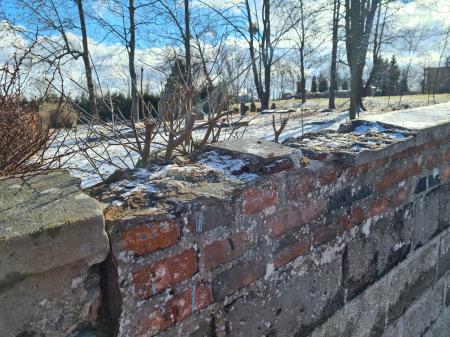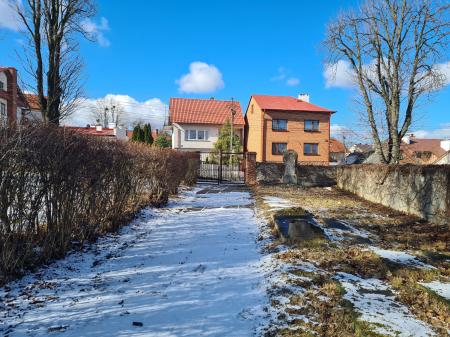Obj. ID: 50704
Jewish Funerary Art New Jewish cemetery in Sandomierz, Poland

According to ESJF European Jewish Cemeteries Initiative, the new cemetery was established around 1830, 1.3km north-west of the market square, among fields. It is currently located between Sucha and Energetyczna Streets. In 1928, it was enlarged. According to sources, the new part was named the “new cemetery”, and the older part the “old cemetery”. The plot was in the shape of a trapezoid with an area of 1.56 hectares. It was fenced with a wall with a gateway. There was a wooden building serving as a gatehouse and a funeral house, and after 1928, a brick building was erected in its place. The older part was covered with trees.
During World War II, the Germans dismantled the wall and took all the tombstones for construction purposes, they then carried out mass executions and burials in mass graves at the cemetery. In 1944, they exhumed some bodies and burned them on the spot in huge furnaces. In the old cemetery, the prisoners dug ditches.
After the war, the survivors organized in the Jewish Committee (which functioned until 1948) exhumed the bodies of Jews murdered and buried outside the cemetery and buried them in the new part of the cemetery, commemorating the graves with concrete tombstones. Moreover, they brought to the cemetery tombstones found outside the cemetery (including the greater Sandomierz district) and made a monument in the shape of a high pyramid. Some tombstones were placed around the monument. In 1956, by order of the government, the part of the cemetery with the monument (12 acres) was surrounded by a wall, and the remaining land was overbuilt and a school was established there. From time to time, new tombstones found in the city are brought to the preserved part of the cemetery.
There is a stone wall along the street and a metal fence on the other sides. Currently, in the preserved part of the cemetery (on the eastern side of Sucha Street), there are approximately 400 traditional matzevot-steles and fragments of tombstones made of white sandstone (the oldest one dating from 1848), mostly embedded in the monument and fence. There are also 12 concrete horizontal tombstones dated 1946–1948 located on symbolic graves.






















